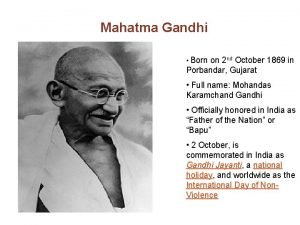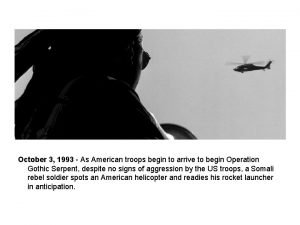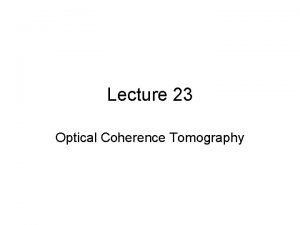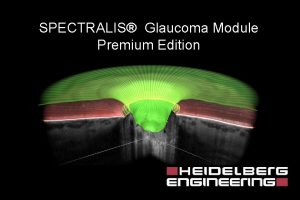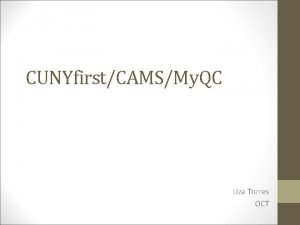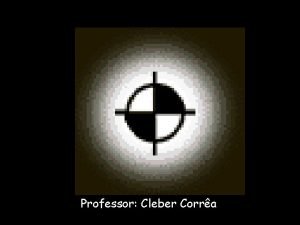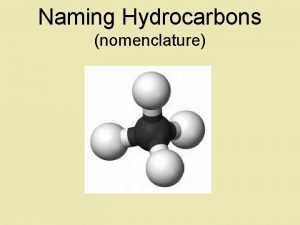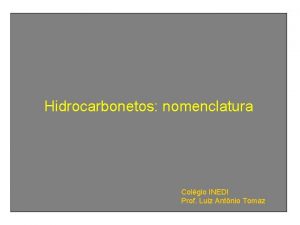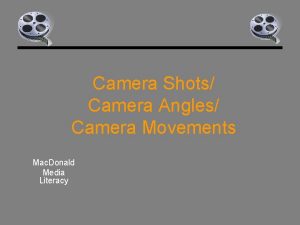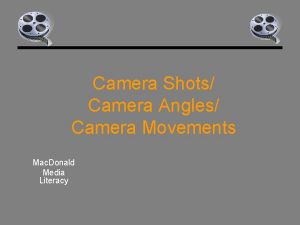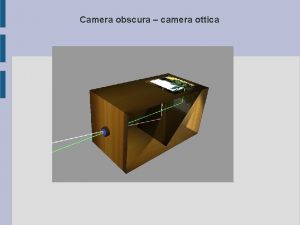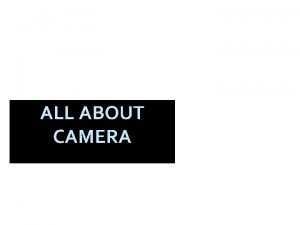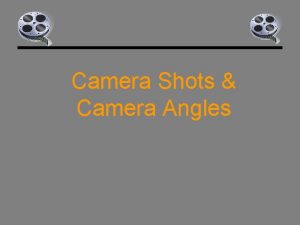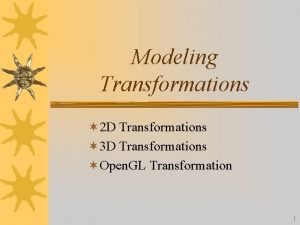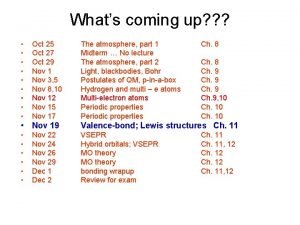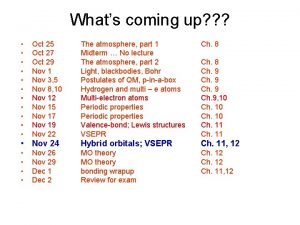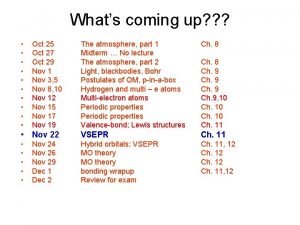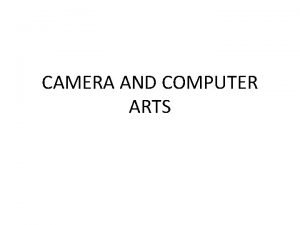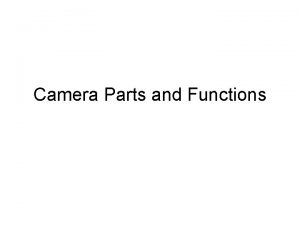The Camera transformations and challenges Oct 19 FAAK


























































- Slides: 58

The Camera: transformations and challenges Oct. 19 FA/AK 2100 After Nadar: Painting offering Photography a Place at the Expo of Fine Arts Tournachon: Felix (Nadar) 1820 1910

Photography and Modernism Robert Frank, Parade, Hoboken, New Jersey, 1955 -1956, from the series The Americans Self conscious art photography, 1940 s-50 s

Photography and Modernism Self conscious art photography, 1940 s-50 s Otto Steinert, Pont Neuf, Paris: 1949

Photography and Modernism Andy Warhol, Beethoven Art embraces mass media Andy Warhol, Lenin

Photography and Modernism The Rise of Conceptualism Joseph Kosuth, One and Three Chairs, 1965

Photography and Modernism Keith Arnatt: "Trouser-Word Piece" (1972) Language was conceptualism’s ideal medium. Put ideas centre stage

Photography and Modernism Chris Burden SHOOT, FSpace, Santa Ana, California November 19, 1971 Language was conceptualism’s ideal medium. Put ideas centre stage

Photography and Modernism Gordon Matta. Clark Pier In/Out 1973 Color photograph Camera extended the idea of the object into performance

Photography and Modernism Barbara Kruger, 1996 Aesthetic conservatism vs radical vanguardism: art as politics

Photography and Modernism Untitled 1981 Art and Theory - Postmodernism

Memories and Archives Photography and the logic of the archive Art could be a space to examine the meanings and implications of the archival rather than simply turning images into art works Gerhard Richter - Atlas 1962 - Panel 1: Album photographs, 1962 -66 28 b/w photographs Overall 51. 7 x 66. 7 cm

Allan Mc. Collum, Each and Every One of You, 2004

Memories and Archives Images can both aid and disable the continuities of history, memory and identity Yinka Shonibare 'Diary of a Victorian Dandy 14: 00 hours', Photograph, 1998

Objectivity and the Camera Gardner, Alexander American (b. Scotland, 1821 -1882) Lewis Payne Photographs as special objects

Objectivity and the Camera Mel Bochner Actual Size (Hand),

Objectivity and the Camera Allan Sekula, Two, three, many. . . (terrorism), 1972, s/w

Objectivity and the Camera John Hilliard. Cause of Death? (1974)

Objectivity and the Camera Bernd and Hilla Becher Water Towers, 1980. Black-and-white photographs mounted on board, 61 7/8 x 49 7/8 inches overall. Extended commitment to objectivity

Objectivity and the Camera Andreas Gursky Chicago Board of Trade II, 1999

Objectivity and the Camera Christian Boltanski France, born 1944 Monument Odessa, 1991 Mixed media

Objectivity and the Camera Fischli & Weiss From the series Quiet Afternoon, 2003

Traces and Time Richard Wentworth Making Do and Getting By, Munich 2000, 2000 Art and data collection

Traces and Time Gabriel Orozco Until You Find Another Yellow Schwalbe 1995 photograph on paper 55 x 71 cms

Traces and Time Man Ray Dust Breeding (Elevage de poussiere), 1920 24 x 30. 5 cm, Black and white photograph

Traces and Time Edward Ruscha Royal Roads Test, 1971

Traces and Time Chris Burden Shoot, 1971 F Space, Santa Ana, California

Traces and Time Eleanor Antin. Carving: A Traditional Sculpture (detail). 1973. 148 photographs; overall length 20'. Instalation of photographs depicting a 5 -week diet resulting in a weight loss of 11 1/2 pounds.

The Everyday HENRI CARTIER BRESSON, (Behind the Gare Saint Lazare), 1932 HENRI CARTIER - BRESSON (Brussels), 1932

The Everyday Martha Rosler The Bowery in Two Inadequate Descriptive Systems 1974 -75 (detail) Moving beyond merely aesthetic images

The Everyday the bowery in two inadequate descriptive systems, (1974 - 1975)

The Everyday Jeff Wall. The Destroyed Room, 1978 Combining descriptive character of photography with theatrical possibilities of staging and awareness of genres from visual art and cinema

The Everyday "Insomnia” by Jeff Wall (1994)

The Everyday Jeff Wall Untitled (overpass), 2001 Combining descriptive character of photography with theatrical possibilities of staging and awareness of genres from visual art and cinema

The Everyday Jeff Wall Mimic, 1982 Combining descriptive character of photography with theatrical possibilities of staging and awareness of genres from visual art and cinema

Jeff Wall Picture for Women 1979 Combining descriptive character of photography with theatrical possibilities of staging and awareness of genres from visual art and cinema Edouard Manet. A Bar at the Folies. Bergère. 1882. Oil on canvas

The Everyday KRZYSZTOF WODICZKO Edinburgh Projections August 1988 Onto six of the columns of the unfinished copy of the Parthenon at Carlton Hill in Edinburgh, Wodiczko projected images that represented the disenfranchised of the city. Personifications of homelessness, single parenthood, unemployment, alcoholism and drug addiction loomed over the city. The text “Morituri te Salutant” (those who are about to die salute you) was projected onto the lintel above. Across the hill the face of Margaret Thatcher and the words “Pax Brittanica” were projected onto the dome of the observatory.

Gillian Wearing Signs that say what you want them to say and not signs that say what someone else wants you to say Interim Art, London 1997 The Everyday

Self Portraits Rudolph Burckhard, Jackson Pollock painting in his studio

Self Portraits Jo Spence, 1990 The self as something performed rather than revealed

Self Portraits The self as something performed rather than revealed Jo Spence, 1990

Self Portraits The self as something performed rather than revealed Cindy Sherman, Untitled # 96

"Untitled Film Still #58" Self Portraits "Untitled Film Still #33"

Self Portraits Francesca Woodman, 1958 -1981

Mediation Allan Mc. Collum, 1982 Perpetual Photo

Mediation Andrew Grassie, Spaceman, from the series 'Why Paint Spacemen', 1997

Mediation John Baldessari, Hanging Man With Sunglasses, 1984

Mediation Yve Lomax “The observer affects the observed, ” 1994

Surveillance: about looking Keith Piper, “Club Mix” 1999

Surveillance: about looking Sofie Calle Suite vénitienne, 1980

Surveillance: about looking Claude Cahun. “What Do You Want of Me, 1928

Surveillance: about looking Philip Lorca, “Heads” (2001)

Nature/Culture Robert Smithson. Spiral Jetty, 1970

Nature/Culture Hamish Fulton Boulder Shadows, Wyoming, 1995

Nature/Culture Richard Misrach Outdoor Dining, Bonneville Salt Flats, Utah, 1992

Nature/Culture GABRIEL OROZCO Cats and Watermelons 1992 Cibachrome, 16 x 20 inches

Counter Cinema: reactions and revolutions • • • Avant-garde cinema vs commercial cinema: To understand avant-garde film and its reasons for being we must related it contextually to mainstream or commercial cinema Mainstream cinema is basically hegemonic The emphasis on realism was established during the early years of film through an increasingly standardized language of film (Classic Hollywood Narrative Form) – Characters were displayed realistically and with a progressive character arc. – The story was told linearly with clear dramatic arc. – Every effort was made to preserve a sense of spatial and temporal continuity.

Counter Cinema: reactions and revolutions • We can also understand the difference and tension between commercial and avant-garde film by this following dichotomy set up by Peter Wollen Classic Cinema Counter Cinema Narrative Transitivity Narrative Intransitivity Identification Estrangement Transparency Foregrounding Single Diegesis Multiple Diegesis Closure Aperture Pleasure Unpleasure Fiction Reality

Counter Cinema: reactions and revolutions • Avant-garde film directly challenges mainstream conventions. • The surrealist approach to cinema was to directly challenge the logic and coherence of narrative approaches to cinema. • Man Ray once said that the point of this type of cinema is to deliberately try the patience of the audience • The avant-garde was not necessarily against narrative but rather wanted to approach it differently.
 Multi camera production examples
Multi camera production examples Camera moves
Camera moves Bi decagon
Bi decagon Mahatma gandhi life sketch
Mahatma gandhi life sketch Mnożenie w systemie czwórkowym
Mnożenie w systemie czwórkowym October 3rd 1993
October 3rd 1993 Low na
Low na Méth eth prop
Méth eth prop Oct 31st sunset
Oct 31st sunset Oct spectralis
Oct spectralis Visante oct
Visante oct Oct stands for
Oct stands for Propiedades químicas del carbono
Propiedades químicas del carbono Stil testi
Stil testi Meth eth prop but
Meth eth prop but What is chemistry
What is chemistry Oct vizsgálat ára
Oct vizsgálat ára Meth eth prop but pent hex
Meth eth prop but pent hex Jhlt. 2019 oct; 38(10): 1015-1066
Jhlt. 2019 oct; 38(10): 1015-1066 Jhlt. 2019 oct; 38(10): 1015-1066
Jhlt. 2019 oct; 38(10): 1015-1066 Jhlt. 2019 oct; 38(10): 1015-1066
Jhlt. 2019 oct; 38(10): 1015-1066 Ciclo alcino
Ciclo alcino Propil
Propil Structural formula vs displayed formula
Structural formula vs displayed formula Classification of hydrocarbons
Classification of hydrocarbons Saturated and unsaturated hydrocarbons
Saturated and unsaturated hydrocarbons Prop but pent hex hept oct
Prop but pent hex hept oct Eth meth prop but
Eth meth prop but Butanoat de metil
Butanoat de metil Homologous family
Homologous family Hidrocarbonetos ramificados
Hidrocarbonetos ramificados Jhlt. 2019 oct; 38(10): 1015-1066
Jhlt. 2019 oct; 38(10): 1015-1066 Scleral lens oct
Scleral lens oct Hình ảnh bộ gõ cơ thể búng tay
Hình ảnh bộ gõ cơ thể búng tay Lp html
Lp html Bổ thể
Bổ thể Tỉ lệ cơ thể trẻ em
Tỉ lệ cơ thể trẻ em Voi kéo gỗ như thế nào
Voi kéo gỗ như thế nào Tư thế worms-breton
Tư thế worms-breton Hát lên người ơi
Hát lên người ơi Môn thể thao bắt đầu bằng từ chạy
Môn thể thao bắt đầu bằng từ chạy Thế nào là hệ số cao nhất
Thế nào là hệ số cao nhất Các châu lục và đại dương trên thế giới
Các châu lục và đại dương trên thế giới Công thức tiính động năng
Công thức tiính động năng Trời xanh đây là của chúng ta thể thơ
Trời xanh đây là của chúng ta thể thơ Mật thư anh em như thể tay chân
Mật thư anh em như thể tay chân 101012 bằng
101012 bằng độ dài liên kết
độ dài liên kết Các châu lục và đại dương trên thế giới
Các châu lục và đại dương trên thế giới Thơ thất ngôn tứ tuyệt đường luật
Thơ thất ngôn tứ tuyệt đường luật Quá trình desamine hóa có thể tạo ra
Quá trình desamine hóa có thể tạo ra Một số thể thơ truyền thống
Một số thể thơ truyền thống Cái miệng xinh xinh thế chỉ nói điều hay thôi
Cái miệng xinh xinh thế chỉ nói điều hay thôi Vẽ hình chiếu vuông góc của vật thể sau
Vẽ hình chiếu vuông góc của vật thể sau Biện pháp chống mỏi cơ
Biện pháp chống mỏi cơ đặc điểm cơ thể của người tối cổ
đặc điểm cơ thể của người tối cổ Ví dụ về giọng cùng tên
Ví dụ về giọng cùng tên Vẽ hình chiếu đứng bằng cạnh của vật thể
Vẽ hình chiếu đứng bằng cạnh của vật thể Vẽ hình chiếu vuông góc của vật thể sau
Vẽ hình chiếu vuông góc của vật thể sau



